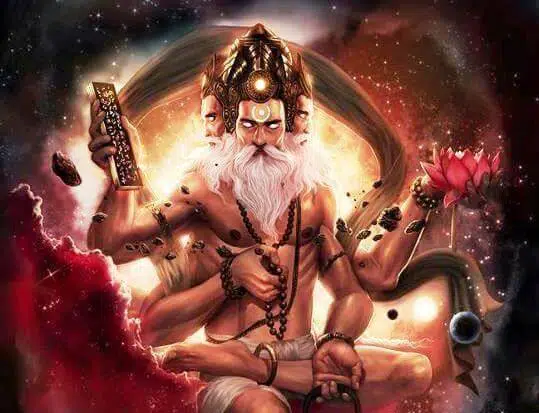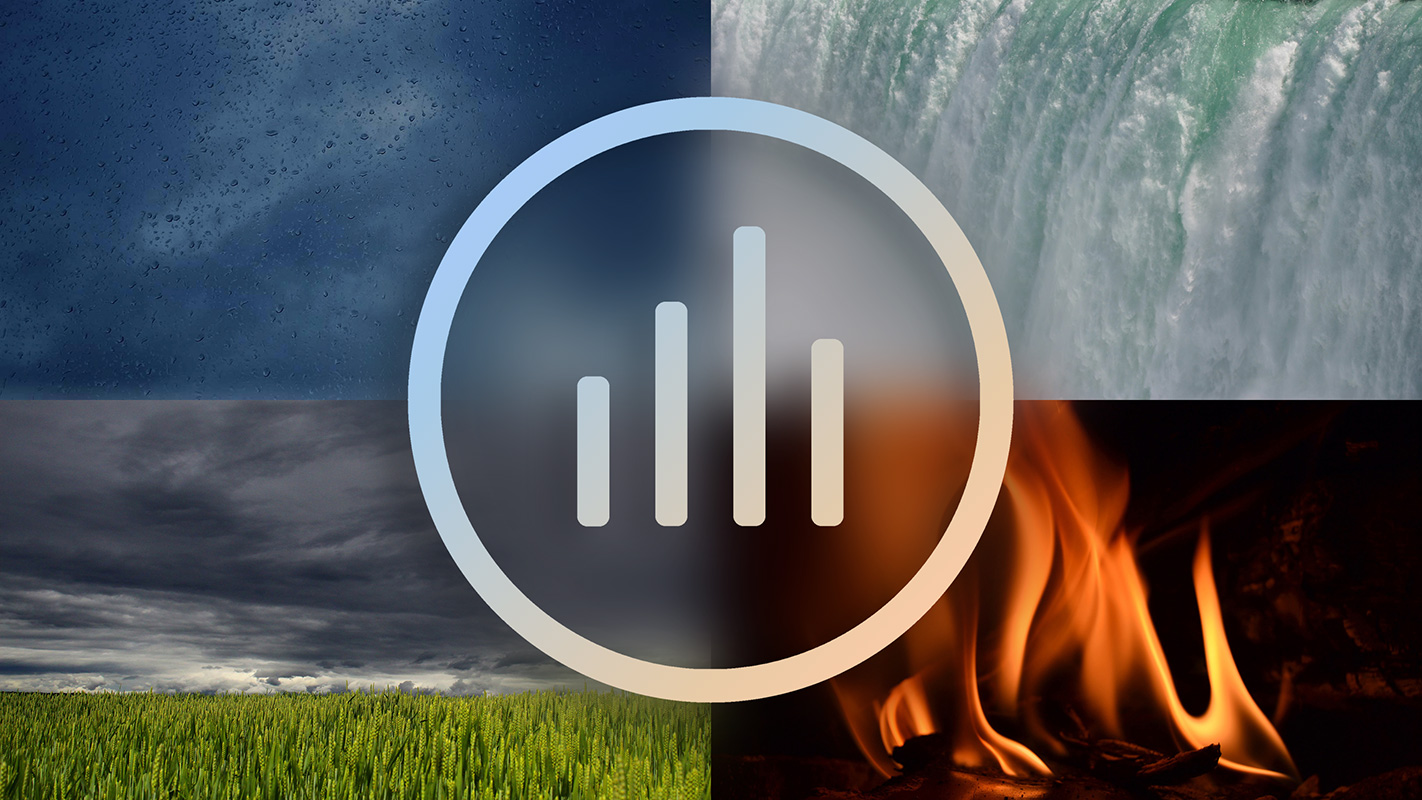
#Brahma had #ten #sons and #one #daughter:
- Marichi Rishi
Rishi Marichi or Mareechi or Marishi (meaning a ray of light) is the son of Brahma. He is also one of the Saptarshi (Seven Great Sages Rishi), in the First Manvantara, with others being Atri Rishi, Angiras Rishi, Pulaha Rishi, Kratu Rishi, Pulastya Rishi, and Vashishtha.
Family: Marichi is married to Kala and gave birth to Kashyap
- Atri Rishi
Atri or Attri is a legendary bard and scholar. Rishi Atri is said to be ancestor of some Brahmin, Prajapatis, kshatriya and Vaishya communities who adopt Atri as their gotra. Atri is the Saptarishis (Seven Great Sages Rishi) in the seventh, i.e. the present Manvantara.
Family: When the sons of Brahma were destroyed by a curse of Shiva, Atri was born again from the flames of a sacrifice performed by Brahma. His wife in both manifestations was Anasuya. She bore him three sons, Datta, Durvasas, and Soma, in his first life, and a son Aryaman (Nobility), and a daughter, Amala (Purity), in the second. Soma, Datta and Durvasa, are the incarnations of the Divine Trinity Brahma, Vishnu, and Rudra (Shiva) respectively.
- Angirasa Rishi
Angirasa is a rishi who, along with sage Atharvan, is credited to have formulated (“heard”) most of the fourth Veda called Atharvaveda. He is also mentioned in the other three Vedas.
Family: His wife is Surupa and his sons are Utathya, Samvartana and Brihaspati
- Pulaha Rishi
He was born from the navel of Lord Brahma. He was burned due to a curse made by Lord Shiva, then was born again in Vaivasvata Manvantara, this time from Agni’s hair.
Family:During his birth in the first Manvantara, Rishi Pulaha was married to another of Daksha’s daughters, Kshama (Apology). Together they had three sons, Kardama, Kanakapeetha and Urvarivat, and a daughter named Peevari.
- Pulutsya Rishi
He was the medium through which some of the Puranas were communicated to man. He received the Vishnu Purana from Brahma and communicated it to Parashara, who made it known to mankind. He was one of the Saptarishis in the first Manvantara.
Family: He was father of Visravas who was the father of Kubera and Ravana, and all the Rakshasas are supposed to have sprung from him. Pulastya Rishi was married to one of Kardam ji’s nine daughters named Havirbhoo. Pulastya Rishi had two sons – Maharshi Agastya and Visravas. Vishravaa had two wives: one was Kekasi who gave birth to Ravana, Kumbhakarna and Vibhishana; and another was Ilavida and had a son named Kuber.
- Krathu Rishi
Kratu which appears in two different ages. In the Swayanbhuva Manvantara. Krathu was a Prajapati and a very dear son of Lord Brahma. He was also the son-in-law of Prajapati Daksha.
Family:His wife was named Santhati. It is said that he had 60,000 children. They were named as included in the Valakhilyas.
Rishi Kratu was again born in the Vaivaswata Manvantara because of Lord Shiva’s boon. In this Manvantara he had no family. It is said that he was born from the hand of Lord Brahma. As he had no family and no children, Kratu adopted Agastya’s son, Idhvaaha. Kratu is considered as one of the Bhargavas.
- Vashistha
Vashistha is one of the Saptarishis in the seventh, i.e. the present Manvantara. He had in his possession the divine cow Kamadhenu, and Nandini her child, who could grant anything to their owners.
Vashistha is credited as the chief author of Mandala 7 of the Rigveda. Vashistha and his family are glorified in RV 7.33, extolling their role in the Battle of the Ten Kings, making him the only mortal besides Bhava to have a Rigvedic hymn dedicated to him. Another treatise attributed to him is “Vashistha Samhita” – a book on the Vedic system of electional astrology.
Family: Arundhati is the name of the wife of Vashista.
In cosmology Mizar star is known as Vashistha and Alcor star is known as Arundhati in traditional Indian astronomy. The pair is considered to symbolise marriage and, in some Hindu communities, priests conducting a wedding ceremony allude to or point out the constellation as a symbol of the closeness marriage brings to a couple. Since Vasishta was married to Arundathi, he was also called Arundathi Natha, meaning the husband of Arundathi.
- Prachethasa
Prachetasa is considered to be one of the most mysterious figures of Hindu mythology. According to the puranas Prachetasa was one of the 10 Prajapatis who were ancient sages and law gives. But there is also a reference to 10 Prachetas who were sons of Prachinabarthis and great grandsons of Prithu. It is said that they lived for 10,000 years in a great ocean, very deeply engaged in meditation upon Vishnu and obtained from Him the boon of becoming the progenitors of mankind.
Family: They married a girl named Manisha, a daughter of Kanclu . Daksha was their son.
- Bhrigu
Maharrishi Bhirgu is the first compiler of predictive astrology, and also the author of Bhrigu Samhita, the astrological (Jyotish) classic.The adjectival form of the name, Bhargava, is used to refer to the descendants and the school of Bhrigu. Along with Manu, Bhrigu had made important contributions to ‘Manusmriti’, which was constituted out of a sermon to a congregation of saints in the state of Brahmavarta, after the great floods in this area, nearly 10,000 years ago.
Family:He was married to Khyati, the daughter of Daksha. He had two sons by her, named Dhata and Vidhata. His daughter Sri or Bhargavi, married Vishnu
- Narada Muni
Narada is a Vedic sage who plays a prominent role in a number of Hindu texts, notably the Ramayana and the Bhagavata Purana. Narada is arguably ancient India’s most travelled sage with the ability to visit distant worlds and realms. He is depicted carrying a Veena, with the name Mahathi and is generally regarded as one of the great masters of the ancient musical instrument. Narada is described as both wise and mischievous, creating some of Vedic literature’s more humorous tales. Vaishnav enthusiasts depict him as a pure, elevated soul who glorifies Vishnu through his devotional songs, singing the names Hari and Narayana, and therein demonstrating bhakti yoga.
- Shatarupa
Brahma had one daughter Named Shatrupa- (one who can take hundred forms) born from various parts of his body. She is said to the first woman created by Lord Brahma. Shatarupa is the female portion of Brahma.
When Brahma created Shatarupa, Brahma followed her wherever she went. To avoid Brahma following her Shatarupa then moved in various directions. In whichever direction she went, Brahma developed another head until he had four, one for each direction of the compass. Shatarupa tried every way to stay out of Brahma’s gaze. However a fifth head appeared and this is how Brahma developed five heads. At this moment Lord Shiva came and cut off the top head of Brahma as it is misdeed and incestuous of Brahma to become obsessed with her, as Shatarupa was her daughter. Lord Shiva ordered that Brahma would not be worshipped for his offence. Since then Brahma has been reciting the four Vedas, one from every mouth in remorse.
https://www.hindufaqs.com/prajapatis-the-10-sons-of-lord-brahma/









